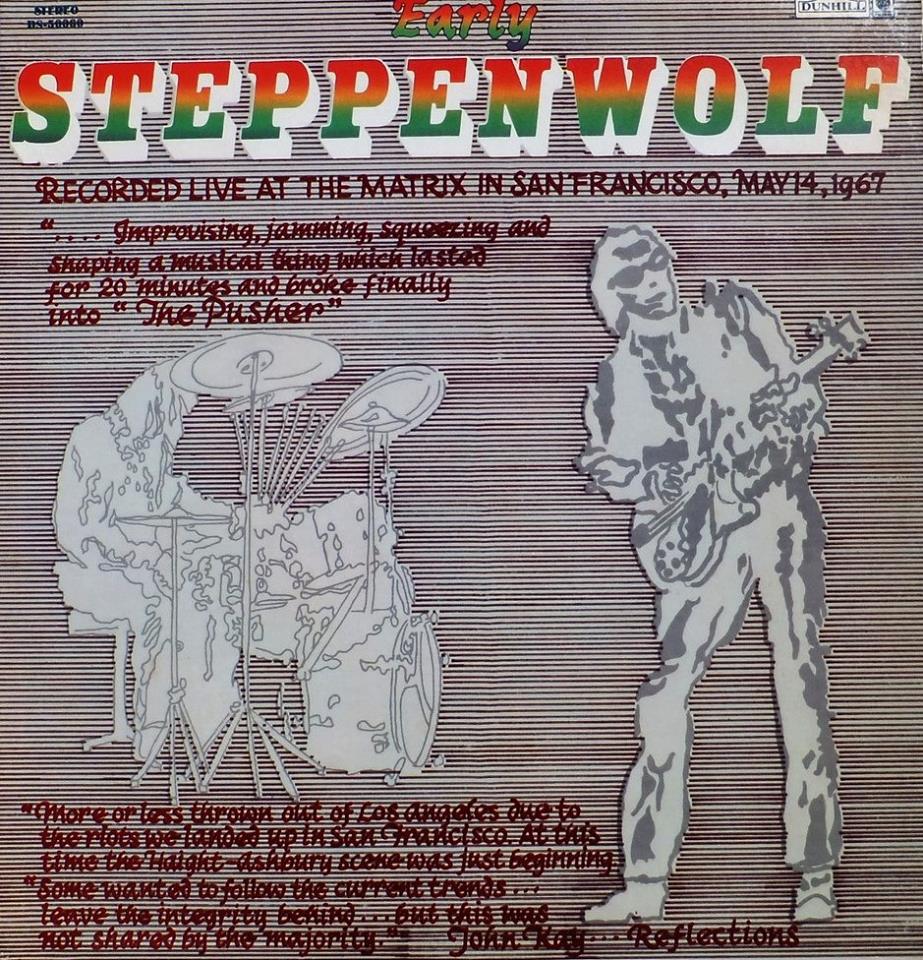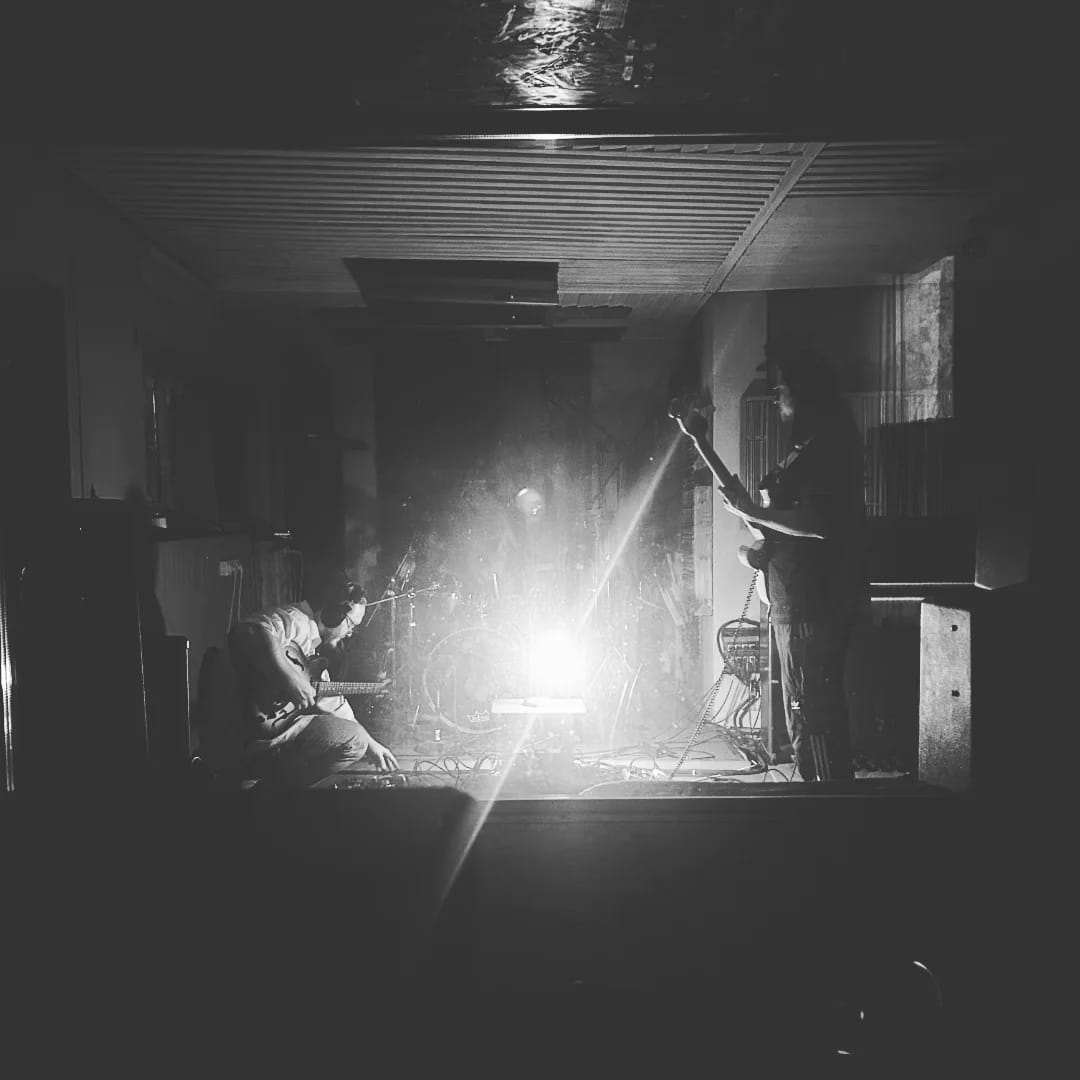The Steppenwolf Story – Chapter Four
Steppenwolf’s fourth release, “Early Steppenwolf” which hit record stores in July 1969 is a most confusing part of the band’s legacy for several reasons. The album, consisting of six tracks recorded live at The Matrix in San Francisco on May 14, 1967, predating the recording of the group’s 1968 s/t debut LP, and was actually a performance done while the quintet was known by its original name, Sparrow.
Not only that, but the group was then led by bassist/backing vocalist Nick St. Nicholas, who would join Steppenwolf in time to help record their third album “At Your Birthday Party,” a March 1969 release, previously reviewed, and also contains the group’s only recordings with lead guitarist Dennis Edmonton, under his pseudonym Mars Bonfire, brother of drummer Jerry Edmonton, and writer of Steppenwolf’s signature tune “Born To Be Wild” a #3 hit single in the US, which was included on “Steppenwolf” as well as appearing on the soundtrack of the classic 1969 motorcycle/drug movie “Easy Rider.” Thus, I trust, the back story for the album on review here is sufficiently clarified.
“Early Steppenwolf” is a rather raw recording of The Sparrow, and a wonderful document of their blues roots, as two of the six tunes are covers of well known blues classics, the Willie Dixon/Howlin’ Wolf penned “Howlin’ For My Darlin’” and John Lee Hooker’s “I’m Going Upstairs,” both of which remain rather faithful the originals, especially the Howlin’ Wolf tune on which guitarist Bonfire stays true to the work of guitar legend Hubert Sumlin’s performance. The Hooker cover varies a bit in that it is stretched to over seven minutes and includes explosive lead lines and solos by Bonfire, as well as the band’s familiar swirling Hammond organ of Goldy McJohn run through Leslie cabinets and Kay’s vocals roaring over the top.
The album opens with the Kay original “Power Play” and features a heavy guitar intro by Bonfire, but it is Kay’s lyrics which give this wonderful piece of social commentary its magic, “What gives you the right hey you, to stand there and tell me what to do, tell me who gave you the power to stop me from livin’ like I do.” The band roars on, a harbinger of the hard rock sound that would become so familiar to rock music fans, as Kay delivers his biting opinion of the political powers of the day and warning to the citizenry, “Remember if you plan to stay, those who give can take away, don’t bite the hand that feeds you” words which have never strayed far from those contemplating the class struggles in the United States and indeed, the world as a whole. The Howlin’ Wolf and Hooker covers occupy tracks two and three on side one. “Corina, Corina” is a traditional American folk song, arranged and adapted by Kay. A staple of Steppenwolf’s live repertoire, the tune appears not only here but on the classic 2 LP “Steppenwolf Live” which would appear in April, 1970, and is to this day considered one of the best live documents ever dedicated to vinyl. Bonfire’s guitar carries “Corina, Corina” which features as close to ballad like vocals by Kay as anything ever recorded by the group. But it is Bonfire’s guitar, joined by McJohn’s organ and Edmonton’s driving drums that make this song a fine fit in the Steppenwolf catalog. Side one closes with “Tighten Up Your Wig” a tune that was another staple of Steppenwolf’s live performances, appearing on both live albums, as well as the band’s sophomore studio effort, 1968s, “Steppenwolf The Second.” In addition, it serves as the title track to the 1993 Columbia/Legacy compilation “The Best Of John Kay & Sparrow.” The performance on “Early Steppenwolf” features a fiery performance from guitarist Bonfire, driving drums by Edmonton, ever present organ by McJohn and tasteful mouth harp from Kay, but it is St. Nicholas’ bass that is on display, supplying the song’s riff, so familiar to Steppenwolf fans. Kay’s lyrics again are integral to the performance, especially his observation, “Your mind is so narrow and it’s no surprise, if you fell on a pin, well, you’d be blind in both eyes, Oh let me see your head, girl, we’ve got to make it big, I better tighten up your wig.” Not just humorous, the lyrics are indeed much more profound, with their reference to the battle between the liberal political movement of the day and the existing status quo, which would soon become the Nixon administration, a familiar target of Kay’s commentary, joining the war raging in Vietnam, which would be the main target of Steppenwolf soon to follow studio album, the November 1969 “Monster,” their fourth studio release and the topic of Chapter Five of The Steppenwolf Story to follow soon.
The entirety of side two of “Early Steppenwolf” is filled with a twenty one and a half minute cover of Hoyt Axton’s anti-drug classic “The Pusher” with its familiar refrain “God damn, the pusher!” The extended take found here is a slow building jam, Edmonton’s drums and feedback from Bonfire’s guitar introducing the epic song, joined along the way by McJohn’s ever present Hammond organ and eventually St. Nicholas’ thundering bass. The band’s improvisations include church style organ by McJohn, bluesy slide and screeching lead guitar by Bonfire, spoken word interludes by Kay, and an incredible space rock ambience by the ensemble, before the tune takes more formal structure half way in, McJohn’s organ and Bonfire’s guitar building a raga rock base from which the group works its way into the more familiar melody that would form the basis of the band’s studio recording of the song for its debut LP and the version found on the 1969 double live LP. This section, the last six minutes of the performance presented here, represents Steppenwolf at its very best. Kay belts of the chorus, as the band does its familiar slow melt, Bonfire’s slide guitar being the one aspect in which it most strongly differs from later recordings. A show stopper for sure, “The Pusher” is the perfect ending for “Early Steppenwolf,” foreboding the incredible body of albums to come.

“Early Steppenwolf” managed to reach #29 on the Billboard Hot 200 album charts despite it being recorded more than two years before its release and featuring performances by Sparrow rather than Steppenwolf. What a testament to the commercial viability of the Steppenwolf brand name. The album, released by ABC/Dunhill to offer product to the band’s fervent fans, who had become spoiled by the rapid release of top quality material by the band, “Early Steppenwolf” bought the label and the group the precious time needed to write and record their follow up, fourth studio album “Monster” which arrived a mere four months later, and is the subject of Chapter Five of The Steppenwolf Story.
Steppenwolf “Monster” (1969)
– Kevin Rathert
All photo materials are copyrighted by their respective copyright owners, and are subject to use for INFORMATIONAL PURPOSES ONLY!




Another fine review in this good series. I didn't know John Kay was a fine lyricist.
It would be nice if you'd also do reviews on SRC if the site hasn't done yet.